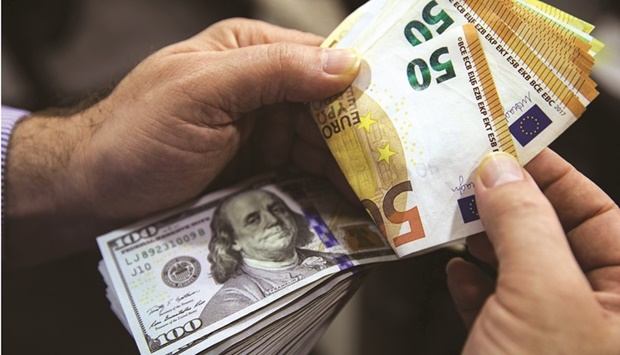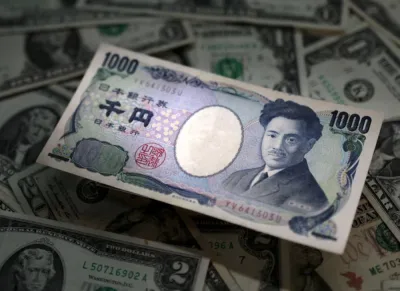Euro-area businesses spent years wishing for a weaker euro. Now it’s here and it couldn’t have come at a worse time.
The currency has slid more than 12% against the dollar this year, taking it below parity for the first time in two decades. That decline is boosting import costs, compounding a damaging surge in energy prices and a record inflation spike ripping through the economy.
All that is bad news for margins, and German businesses on Tuesday warned they are still facing “strong costs pressures.” In addition, consumer inflation in the eurozone is already close to 9%, keeping a lid on demand, which will also weigh on sales and profits.
Whatever positives come from the currency’s depreciation - export competitiveness, exchange-rate effect on foreign earnings - are being overshadowed by the energy crisis and the threat of a recession. Europe is particularly exposed because of its dependence on imports from Russia. Gas supplies have already been reduced, and further cuts would heap even more strain on the region’s economies, particularly Germany.
The euro isn’t the only asset reflecting concerns about Europe’s economy. According to Madison Faller, global strategist at JPMorgan Private Bank, the drop below parity is “emblematic of the greater downside risks to growth in Europe.”
“European equities are trading at a notable 30% discount to US stocks, reflecting these risks and the market’s greater weighting to sectors like energy and financials,” she said.
Economic worries are also feeding the exchange-rate moves as traders bet they will limit the European Central Bank’s ability to tighten, leading it to fall further behind the aggressive hiking pace of the Federal Reserve. The widening interest-rate differential is benefiting the dollar, and the current trend is as much a story of greenback strength. Against a basket of global currencies, the euro is only near its lowest since 2015 on a closing basis, according to a Bloomberg index. But there’s also a major structural issue at play, because the energy crisis is forcing Germany to reassess the long-term industrial model that’s been at the heart of its economy. That model - which ING strategist Chris Turner sums up as “importing cheap energy, taking advantage of globalisation, adding value and exporting products around the world” - has lost that important first pillar.
“If you see euro-dollar at parity, you think it looks super cheap,” he said. “But actually the fair value of the euro has been damaged by the energy crisis and you can’t rule out it moving another 10 big figures lower from here.”
Other strategists agree the risks are to the downside. Morgan Stanley forecasts the euro will slide to $0.97 this quarter, a level not seen since the early 2000s. JPMorgan expects it to test $0.95 in the second half of this year. The euro’s latest decline has taken it to the lowest since 2002. Its weakest point was in 2000, when it dropped below 85 cents.
The currency then appreciated, and was above $1.30 - on average - through the global financial crisis and subsequent eurozone debt crisis. That led to complaints from businesses and politicians at the time that the strength was hurting exports and the economy.
Now the situation has reversed again.
The depreciation has meant some European companies got a boost to earnings that were converted from other currencies. Firms in the Stoxx 600 Index derive on average more than half of their revenue from outside the region and the US is one of their biggest markets.
For a company like Airbus SE, which sells aircraft in dollars and books revenue in euros, a 1 cent fluctuation in euro-dollar rate has had an impact of €130mn on annual profits, based on Bloomberg calculations.
Unilever Plc made a currency gain of €1.3bn in the first half helped by the strengthening of the US dollar, Brazilian real and Indian rupee against the euro. That was more than double the year-earlier benefit.
But any currency benefit there may be eroded by the impact on costs, particularly if the materials are priced in dollars.
“The weak euro damages company profit margins via higher input prices denominated in dollar,” said Kenneth Broux, Societe Generale SA’s head of corporate research, FX and rates. “If domestic/global demand also weakens because of the hit to real income and consumer spending from surging energy prices and a global weakening in demand, then company sales and profits can also be adversely hit.”

A customer counts US dollar banknotes and euro banknotes inside a foreign currency exchange bureau in Istanbul. The currency has slid more than 12% against the dollar this year, taking it below parity for the first time in two decades.

